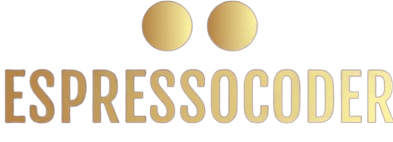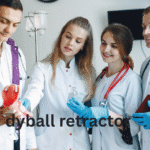When a patient undergoes surgery, the outcome depends not only on the surgeon’s skill but also on the tools that enable precision. Among these specialized tools, the Dyball retractor plays an understated yet indispensable role. For anyone researching this instrument—whether a medical student, a surgical technician, or simply a curious reader—the central question is clear: What exactly is a Dyball retractor, and why is it so important in surgical practice?
The Dyball retractor is a surgical instrument designed to hold back tissue, organs, or other structures to allow surgeons better visibility and access to the operative site. Unlike general-purpose retractors, this instrument has a specialized design that makes it particularly valuable in delicate surgical procedures. Its function is not flashy, yet without it, many operations would be exponentially more difficult, less precise, and potentially riskier for the patient.
In this guide, we will explore the Dyball retractor in depth—its origin, construction, types, applications, benefits, and challenges. We’ll also provide insight into how its use has evolved alongside modern surgical techniques and highlight the significance of proper handling and sterilization.
What is a Dyball Retractor?
A Dyball retractor is a handheld or self-retaining surgical retractor used to pull back tissues during operations. Its design allows surgeons to maintain an unobstructed view and access, minimizing the need for repeated manual adjustments. The tool is generally crafted from high-quality stainless steel to ensure durability, resistance to corrosion, and ease of sterilization.
While retractors in general have existed for centuries, the Dyball variant was designed to improve upon earlier models by offering greater stability, ergonomic handling, and versatility in specialized surgical contexts. Surgeons rely on it not only for exposure but also for patient safety, since improper visibility can lead to accidental damage to critical structures.
The Anatomy of the Dyball Retractor
A Dyball retractor is more than just a metal tool. Each element of its design serves a precise purpose:
- Blades: These are the flat or curved parts inserted into the incision. They vary in size and curvature depending on the surgical need.
- Shank: The central portion connecting handle to blade, engineered for strength and balance.
- Handle: Designed to fit comfortably in the hand or, in some variations, to lock into position for self-retaining use.
- Teeth or Serrations (Optional): Some models feature small teeth to grip tissues gently without slipping.
The instrument’s weight and balance are carefully calibrated, allowing surgeons to hold or position it for extended durations without unnecessary strain.
Table: Key Features of the Dyball Retractor
| Feature | Description | Importance in Surgery |
| Blade Design | Flat, curved, or fenestrated options | Provides tailored access for different surgical procedures |
| Handle Type | Ergonomic grip or self-retaining lock | Ensures surgeon comfort and stability during long operations |
| Material | Surgical-grade stainless steel | Corrosion-resistant, durable, sterilizable |
| Size Range | Varies from small to large | Enables use in diverse surgical contexts |
| Function | Tissue and organ retraction | Improves visibility and reduces accidental tissue damage |
Applications of the Dyball Retractor
The Dyball retractor is not a one-size-fits-all tool but rather a versatile instrument used across multiple surgical disciplines. Common applications include:
- General Surgery
Surgeons use it to hold back skin, subcutaneous fat, or muscle layers during abdominal or thoracic operations. - Orthopedic Surgery
Essential when exposing bones, joints, or connective tissues during procedures like joint replacements or fracture repairs. - Neurosurgery
Smaller Dyball retractors are used to retract delicate neural tissue while ensuring minimal trauma. - Plastic and Reconstructive Surgery
Precision retractors allow surgeons to create symmetrical outcomes in reconstructive or cosmetic interventions. - Cardiothoracic Surgery
The tool provides stable exposure of heart structures or major blood vessels during intricate cardiac repairs. - Veterinary Surgery
Beyond human medicine, Dyball retractors are also adapted for use in complex animal surgical procedures.
Advantages of the Dyball Retractor
The enduring relevance of the Dyball retractor lies in its advantages:
- Stability: Maintains consistent exposure, reducing the need for manual assistance.
- Ergonomics: Designed for surgeon comfort even during long operations.
- Precision: Minimizes accidental slippage that could damage tissues.
- Versatility: Available in multiple sizes and designs to suit diverse surgeries.
- Durability: Made from stainless steel, ensuring longevity and reusability.
Evolution of Surgical Retractors and Dyball’s Place
Surgical retractors trace their roots back to ancient medicine, where simple hooks were used to pull tissue aside. Over centuries, innovations improved their design, from wooden handles to tempered steel. The Dyball retractor represents a culmination of these advancements—engineered with ergonomics and tissue safety in mind.
In modern operating rooms, the Dyball retractor often complements advanced imaging systems and minimally invasive techniques. While robotic-assisted surgery may require fewer handheld retractors, the Dyball remains relevant for open surgeries, emergency procedures, and cases where direct manual control is irreplaceable.
Sterilization and Maintenance
Because surgical instruments directly contact internal tissues, sterilization is crucial. The Dyball retractor, like all surgical tools, must undergo rigorous cleaning and sterilization:
- Pre-cleaning: Immediate rinsing to remove biological debris.
- Ultrasonic Cleaning: Use of vibration and detergent to dislodge contaminants.
- Autoclaving: Exposure to pressurized steam at high temperature to kill pathogens.
- Inspection: Ensuring no cracks, dullness, or corrosion is present.
Proper maintenance extends the instrument’s lifespan and ensures patient safety.
Training and Handling
For surgical residents and nurses, learning to handle a Dyball retractor is part of foundational training. Precision is key: improper placement can obscure rather than improve visibility. Hand positioning, angle of retraction, and awareness of anatomical structures all influence successful use.
Mentorship and simulation labs provide trainees with opportunities to practice in controlled environments before applying skills in real operations.
Challenges and Limitations
Despite its strengths, the Dyball retractor is not without limitations:
- Requires Experience: Incorrect handling may cause unnecessary tissue trauma.
- Bulk in Narrow Spaces: In minimally invasive procedures, its size may be impractical.
- Manual Fatigue: In non-self-retaining models, continuous holding can tire assistants.
These limitations have spurred innovations, such as lighter-weight alloys and retractors with interchangeable blades.
Future of the Dyball Retractor
As surgery increasingly shifts toward minimally invasive and robotic techniques, the Dyball retractor’s design is also evolving. Innovations may include:
- Titanium-based lightweight versions
- Disposable models for low-resource settings
- Integration with fiber-optic lighting for enhanced visualization
- Hybrid retractors compatible with robotic arms
Yet, no matter how advanced surgical technology becomes, the basic principle of tissue retraction will remain, ensuring that tools like the Dyball retractor retain relevance.
Frequently Asked Questions (FAQs)
1. What is the Dyball retractor primarily used for?
It is primarily used to hold back tissues or organs during surgery, providing the surgeon with unobstructed visibility and access.
2. How does the Dyball retractor differ from other retractors?
Its ergonomic design and stability distinguish it, offering better precision and reduced risk of slippage compared to general retractors.
3. Can the Dyball retractor be used in minimally invasive surgeries?
While not commonly used in laparoscopic or robotic surgeries, modified smaller versions may still be applied in certain contexts.
4. How should a Dyball retractor be cleaned?
It requires pre-cleaning, ultrasonic washing, and autoclaving, followed by inspection for wear and damage before reuse.
5. Is the Dyball retractor used in veterinary medicine?
Yes, it is also adapted for use in animal surgeries, particularly in complex orthopedic or abdominal procedures.
Conclusion
The Dyball retractor may not capture public imagination like high-tech surgical robots, but its value in medicine is immense. It exemplifies how a seemingly simple tool can make the difference between a successful operation and one fraught with complications. By providing surgeons with the clarity and space they need, the Dyball retractor has secured its place as a vital instrument in operating rooms worldwide.
For medical professionals, understanding this tool is not optional—it is essential knowledge that enhances surgical safety, precision, and efficiency. And for patients, the presence of such an instrument is a reminder of the quiet but powerful innovations that underpin modern medicine.







